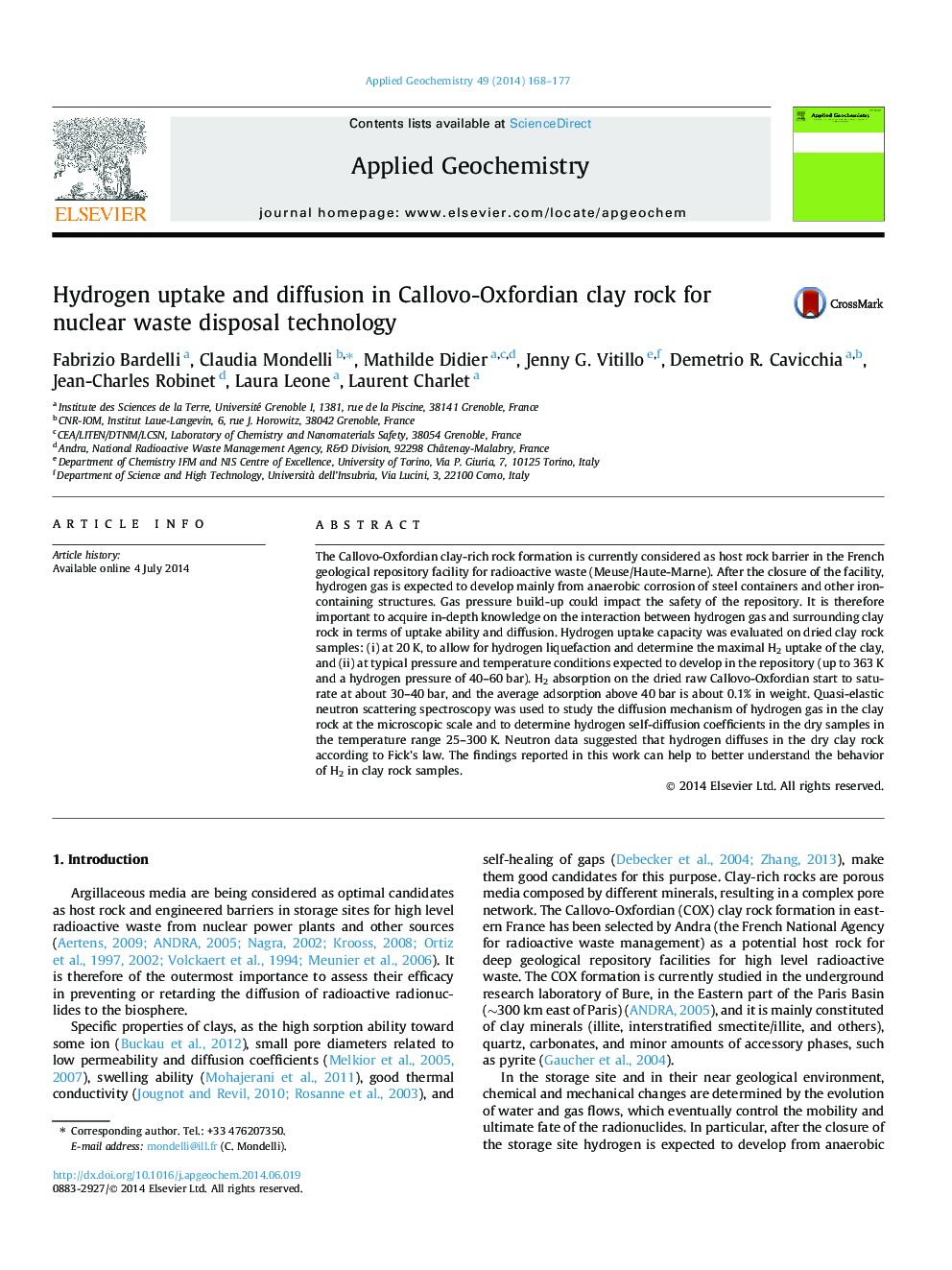| کد مقاله | کد نشریه | سال انتشار | مقاله انگلیسی | نسخه تمام متن |
|---|---|---|---|---|
| 4435771 | 1620242 | 2014 | 10 صفحه PDF | دانلود رایگان |

• We estimated the H2(g) sorption capacity of Callovo-Oxfordian clay rock samples.
• We compared H2 and N2 adsorption at different temperatures and pressures.
• We estimated the H2(g) diffusion constants and mechanism at 25–300 K and 40 bar.
• We worked at pressures and temperatures of interest for nuclear waste storage sites.
The Callovo-Oxfordian clay-rich rock formation is currently considered as host rock barrier in the French geological repository facility for radioactive waste (Meuse/Haute-Marne). After the closure of the facility, hydrogen gas is expected to develop mainly from anaerobic corrosion of steel containers and other iron-containing structures. Gas pressure build-up could impact the safety of the repository. It is therefore important to acquire in-depth knowledge on the interaction between hydrogen gas and surrounding clay rock in terms of uptake ability and diffusion. Hydrogen uptake capacity was evaluated on dried clay rock samples: (i) at 20 K, to allow for hydrogen liquefaction and determine the maximal H2 uptake of the clay, and (ii) at typical pressure and temperature conditions expected to develop in the repository (up to 363 K and a hydrogen pressure of 40–60 bar). H2 absorption on the dried raw Callovo-Oxfordian start to saturate at about 30–40 bar, and the average adsorption above 40 bar is about 0.1% in weight. Quasi-elastic neutron scattering spectroscopy was used to study the diffusion mechanism of hydrogen gas in the clay rock at the microscopic scale and to determine hydrogen self-diffusion coefficients in the dry samples in the temperature range 25–300 K. Neutron data suggested that hydrogen diffuses in the dry clay rock according to Fick’s law. The findings reported in this work can help to better understand the behavior of H2 in clay rock samples.
Journal: Applied Geochemistry - Volume 49, October 2014, Pages 168–177